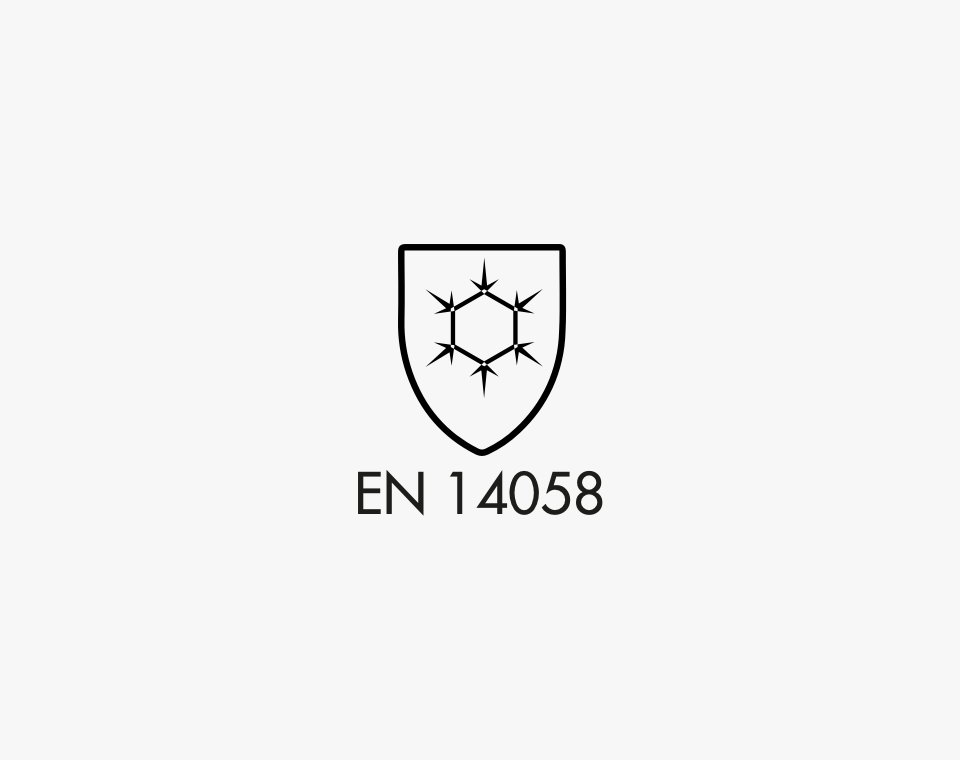
European standard EN 14058 specifies the requirements and performance test methods for single items of clothing designed to protect the body against moderately cold environments: temperatures of -5°C and above.
EN 14058 takes into account several types of performance index.
Y: Thermal insulation or thermal resistance – class 1 to 4 depending on the thermal resistance in m²K/W.
The higher the class, the better the insulation. The value Rct is determined on all fabric layers and ensures insulation.
Y: Air permeability (optional) – class 1 to 3 depending on air diffusion in mm/s.
The higher the class, the better the airtightness and insulation. Wind can significantly increase convective heat loss.
Y: Resistance to water penetration (optional) – class 1 or 2.
The water penetration resistance of fabric and seams is given in Pa.
Waterproofness Class 1 / WP in Pa: 8000 ≤ WP ≤ 13000
Waterproofness Class 2 / WP in Pa: WP > 13000
Insulation value on a mobile thermal manikin (optional).
Insulation value on a static thermal manikin (optional).
Thermal insulation of the complete garment and air permeability are the essential properties to be verified and indicated on the label.
Thermal insulation is the most important property, and is measured on the complete reference garment set or reference garment with a full-size thermal manikin to take account of layering effects, fit, drape, surface coverage and shape.
Wind can significantly increase convective heat loss. Consequently, the air permeability of the garment’s outer material is important for protection against cold.
All activities requiring intervention in cold environments: Temperatures of -5°C and above. maintenance of green spaces, public works, waste management, airport personnel, forklift truck operators, technical road agents, road and rail transport, operation and maintenance of ski lifts, installation and maintenance of electricity and telecommunication network lines, cold stores, high-altitude workers, etc.